How to Write a Bill of Sale
A bill of sale is a legal document that confirms the transfer of a vehicle's title from a buyer to a seller. It is often required by your state to be filled out properly and submitted, by the buyer of a vehicle as part of the registration...
Sample Sales Contract and Disclosure Addendum
 How to Write a Bill of Sale Picture 1 Sample Used Car Sale Contract
How to Write a Bill of Sale Picture 1 Sample Used Car Sale Contract How to Write a Bill of Sale Picture 2 Sample Bill of Sale Disclosure Addendum
How to Write a Bill of Sale Picture 2 Sample Bill of Sale Disclosure AddendumMethod 1 of 2:
Writing Your Own Bill of Sale
-
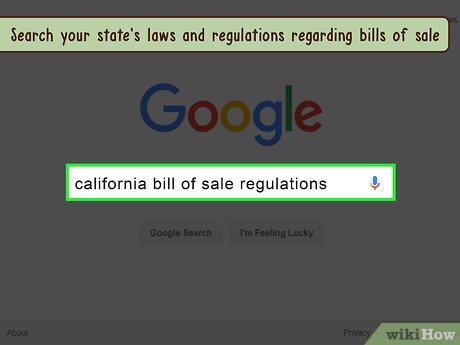 How to Write a Bill of Sale Picture 3 Track down your state's laws and regulations regarding bills of sale. After you buy a vehicle, you will need to fill out a bill of sale and submit it to the DMV, as part of the vehicle registration process, in order to prove you own the vehicle.[2] If you are choosing to draft your own bill of sale, you will need to make sure it complies with your state's laws and regulations. States regulate these documents because they are used for official purposes (i.e., to register your vehicle).[3]
How to Write a Bill of Sale Picture 3 Track down your state's laws and regulations regarding bills of sale. After you buy a vehicle, you will need to fill out a bill of sale and submit it to the DMV, as part of the vehicle registration process, in order to prove you own the vehicle.[2] If you are choosing to draft your own bill of sale, you will need to make sure it complies with your state's laws and regulations. States regulate these documents because they are used for official purposes (i.e., to register your vehicle).[3]- To find out if your state regulates bills of sale, conduct a general internet search for "[your state's] bill of sale regulations". Look for government websites and links to statutes and regulatory guidance documents.
- If you do not have permanent access to the internet, you can visit your local law library and ask for help. Law librarians are well-trained to help you find books and other materials on specific legal topics. When you get to the library, ask a librarian if they can help you find laws relating to vehicle registration and certificates of vehicle title. Let them know you are looking for information on bills of sale.
-
 How to Write a Bill of Sale Picture 4 Analyze the legal requirements set out in your state's laws and regulations. Once you find the applicable laws, look through them to determine what will have to be included in your bill of sale. This step is important and, if you miss a requirement, your bill of sale could be rejected by the DMV. While each state will have its own requirements, bills of sale will generally have to have at least the following information:[4]
How to Write a Bill of Sale Picture 4 Analyze the legal requirements set out in your state's laws and regulations. Once you find the applicable laws, look through them to determine what will have to be included in your bill of sale. This step is important and, if you miss a requirement, your bill of sale could be rejected by the DMV. While each state will have its own requirements, bills of sale will generally have to have at least the following information:[4]- The date of the sale
- A description of the vehicle (e.g., make, model, VIN, and manufacture year)
- Your name and address (as the buyer)
- The seller's signature and address.
-
 How to Write a Bill of Sale Picture 5 Draft an introduction. After compiling a list of all the things that need to be included in a bill of sale, you can start drafting. If at all possible, use a computer. Start by giving your document a title (e.g., "Bill of Sale"). Directly beneath the title, write an introduction that gives context to the document and presents the transaction that took place.
How to Write a Bill of Sale Picture 5 Draft an introduction. After compiling a list of all the things that need to be included in a bill of sale, you can start drafting. If at all possible, use a computer. Start by giving your document a title (e.g., "Bill of Sale"). Directly beneath the title, write an introduction that gives context to the document and presents the transaction that took place.- For example, your introduction might state, "Seller is selling, transferring, and delivering the below vehicle to Buyer."[5]
-
 How to Write a Bill of Sale Picture 6 Identify the parties. Within the introduction, or directly after, you need to define who the buyer is and who the seller is. These are the parties to the bill of sale so they need to be described in as much detail as possible. While every state will have different requirements, you should always include:
How to Write a Bill of Sale Picture 6 Identify the parties. Within the introduction, or directly after, you need to define who the buyer is and who the seller is. These are the parties to the bill of sale so they need to be described in as much detail as possible. While every state will have different requirements, you should always include:- The seller's full name, address, and phone number.
- The buyer's (your) full name, driver license number, address, and phone number.
-
 How to Write a Bill of Sale Picture 7 Detail the date of the sale and the purchase price of the vehicle. The next sentence of your bill of sale should describe the sale that has taken place. You need to include at least the date the vehicle was purchased and the price you paid to purchase it.
How to Write a Bill of Sale Picture 7 Detail the date of the sale and the purchase price of the vehicle. The next sentence of your bill of sale should describe the sale that has taken place. You need to include at least the date the vehicle was purchased and the price you paid to purchase it.- If the vehicle was gifted to you, you need to state this. In addition, you should indicate what the parties perceive the value of the gift to be (i.e., how much you think the car is worth).[6]
-
 How to Write a Bill of Sale Picture 8 Describe the vehicle. In a new paragraph, the car needs to be described in enough detail that the DMV can accurately link the particular bill of sale to the vehicle you are trying to register in your name. If the vehicle description is too vague, the DMV will not be able to process your bill of sale for registration purposes. While each state will require different information, you should always try to include the vehicle's:[7]
How to Write a Bill of Sale Picture 8 Describe the vehicle. In a new paragraph, the car needs to be described in enough detail that the DMV can accurately link the particular bill of sale to the vehicle you are trying to register in your name. If the vehicle description is too vague, the DMV will not be able to process your bill of sale for registration purposes. While each state will require different information, you should always try to include the vehicle's:[7]- Make
- Model
- Vehicle Identification Number (VIN)
- Model year
- Year of manufacture
- Type of body (e.g., pickup, sedan, SUV)
- Number of cylinders
-
 How to Write a Bill of Sale Picture 9 Include an odometer reading. Federal and state laws require the seller to disclose an accurate odometer reading to you when they transfer ownership of the vehicle. Because the transfer document is usually a bill of sale, this is where the odometer disclosure usually takes place. In addition to leaving space for the seller to write in the odometer reading, you should also include a certification for the seller to sign or initial, which will state that the odometer reading is accurate.
How to Write a Bill of Sale Picture 9 Include an odometer reading. Federal and state laws require the seller to disclose an accurate odometer reading to you when they transfer ownership of the vehicle. Because the transfer document is usually a bill of sale, this is where the odometer disclosure usually takes place. In addition to leaving space for the seller to write in the odometer reading, you should also include a certification for the seller to sign or initial, which will state that the odometer reading is accurate.- For example, you might draft a provision that states, "Seller certifies that the odometer reading is [put mileage here], and that this reading reflects the actual mileage. Providing a false statement may result in Seller being fined and/or imprisoned."
-
 How to Write a Bill of Sale Picture 10 Draft any other information you want to include in the document. Depending on the complexity of your transaction, you may choose to include other information in your bill of sale. Commonly, sellers and buyers will agree to certain warranties, which are promises and assurances about the history of the vehicle and its condition.
How to Write a Bill of Sale Picture 10 Draft any other information you want to include in the document. Depending on the complexity of your transaction, you may choose to include other information in your bill of sale. Commonly, sellers and buyers will agree to certain warranties, which are promises and assurances about the history of the vehicle and its condition.- In addition, some bills of sale are drafted and provided to a lender as security for a loan. If you are in this scenario, your bill of sale will need to include language making it clear that it will not become effective unless you default on your loan. For example, this type of provision might be necessary if you ask a bank for a loan and the bank requires you to use your car as collateral on that loan.[8]
-
 How to Write a Bill of Sale Picture 11 Leave space for signatures. At the bottom of the bill of sale, make sure you leave lines where both you and the seller can sign and date the agreement. While most states only require the seller to actually sign the bill of sale, it is always good practice to have the buyer sign as well.[9]
How to Write a Bill of Sale Picture 11 Leave space for signatures. At the bottom of the bill of sale, make sure you leave lines where both you and the seller can sign and date the agreement. While most states only require the seller to actually sign the bill of sale, it is always good practice to have the buyer sign as well.[9] -
 How to Write a Bill of Sale Picture 12 Get the bill of sale notarized, if required. If your state requires you to get bills of sale notarized, you will need to hold off on signing the agreement until you are in front of a notary.[10] Notaries can be found at most banks, law offices, and even a lot of nonprofit organizations. Once in front of a notary, you and the seller will sign the bill of sale and the notary will acknowledge the signatures.
How to Write a Bill of Sale Picture 12 Get the bill of sale notarized, if required. If your state requires you to get bills of sale notarized, you will need to hold off on signing the agreement until you are in front of a notary.[10] Notaries can be found at most banks, law offices, and even a lot of nonprofit organizations. Once in front of a notary, you and the seller will sign the bill of sale and the notary will acknowledge the signatures.
Method 2 of 2:
Using Official Bill of Sale Forms
-
 How to Write a Bill of Sale Picture 13 Obtain a bill of sale form. In most circumstances, you will be able to fill out a simple bill of sale form instead of drafting one from scratch. State DMVs and transportation departments will usually make forms available that include all of the required information. Talk with the vehicle's seller and determine who will obtain the bill of sale form. If you need to get the form, you can do so in the following ways:
How to Write a Bill of Sale Picture 13 Obtain a bill of sale form. In most circumstances, you will be able to fill out a simple bill of sale form instead of drafting one from scratch. State DMVs and transportation departments will usually make forms available that include all of the required information. Talk with the vehicle's seller and determine who will obtain the bill of sale form. If you need to get the form, you can do so in the following ways:- First you can navigate to your state's DMV website and download the form from there. Generally, every state will have a place online where you can find forms. Look for the vehicle bill of sale form.
- If you do not have consistent access to the internet, you can call your local DMV office and ask them to send the bill of sale form to you.
- If you are near your DMV, you can visit the office in person and pick up a bill of sale form as well.
-
 How to Write a Bill of Sale Picture 14 Fill out the required information. Once you get a copy of your applicable bill of sale form, you will need to fill it out with the seller of the vehicle. Work through the form and fill out everything accurately and completely. Do not leave anything blank unless the form says it is acceptable. While each state form will differ in substance and layout, they will all usually ask for at least the following information:[11]
How to Write a Bill of Sale Picture 14 Fill out the required information. Once you get a copy of your applicable bill of sale form, you will need to fill it out with the seller of the vehicle. Work through the form and fill out everything accurately and completely. Do not leave anything blank unless the form says it is acceptable. While each state form will differ in substance and layout, they will all usually ask for at least the following information:[11]- The vehicle's description
- The names of the buyer and seller
- The date the transaction took place
- How much the vehicle was sold for
- Whether the vehicle transfer was a gift
- The seller's address and contact information
- The buyer's address
- The seller's signature
-
 How to Write a Bill of Sale Picture 15 Add an addendum if you need to include additional information. If your state has a form, it may not include all of the information you want to include. If this happens, you can usually attach a piece of paper, known as an addendum, to the bill of sale form. Some states may even have certain addendum forms for particular situations. For example, in Vermont, if the vehicle you are buying is nine years old or newer, you and the seller must attach an odometer disclosure statement. This statement asks the seller to certify the vehicle's mileage and it must be signed by you and the seller.
How to Write a Bill of Sale Picture 15 Add an addendum if you need to include additional information. If your state has a form, it may not include all of the information you want to include. If this happens, you can usually attach a piece of paper, known as an addendum, to the bill of sale form. Some states may even have certain addendum forms for particular situations. For example, in Vermont, if the vehicle you are buying is nine years old or newer, you and the seller must attach an odometer disclosure statement. This statement asks the seller to certify the vehicle's mileage and it must be signed by you and the seller. -
 How to Write a Bill of Sale Picture 16 Have each party sign the bill of sale. After you fill out the bill of sale and all required or discretionary addendums, you and the seller need to sign in the necessary places. Most states only require the seller to sign the bill of sale, but both parties might do it anyway. Additionally, you and/or the seller may have to sign one or more addendums. Make sure you read the form directions carefully so every party signs the in the correct places.
How to Write a Bill of Sale Picture 16 Have each party sign the bill of sale. After you fill out the bill of sale and all required or discretionary addendums, you and the seller need to sign in the necessary places. Most states only require the seller to sign the bill of sale, but both parties might do it anyway. Additionally, you and/or the seller may have to sign one or more addendums. Make sure you read the form directions carefully so every party signs the in the correct places. -
 How to Write a Bill of Sale Picture 17 Give the original bill of sale to the buyer. The bill of sale is not only a document that evidences the sale of a vehicle, it is also an official document that must be submitted to the state. Therefore, you (the buyer) will need to obtain the original bill of sale once it has been filled out. This original document will need to be filed with the DMV when you register the vehicle in your name.
How to Write a Bill of Sale Picture 17 Give the original bill of sale to the buyer. The bill of sale is not only a document that evidences the sale of a vehicle, it is also an official document that must be submitted to the state. Therefore, you (the buyer) will need to obtain the original bill of sale once it has been filled out. This original document will need to be filed with the DMV when you register the vehicle in your name. -
 How to Write a Bill of Sale Picture 18 Keep a copy for your records. Before you file the bill of sale, make copies for the seller and yourself. This document is your main piece of evidence proving a transfer took place. You will need it in case there is a dispute between you and the other party.
How to Write a Bill of Sale Picture 18 Keep a copy for your records. Before you file the bill of sale, make copies for the seller and yourself. This document is your main piece of evidence proving a transfer took place. You will need it in case there is a dispute between you and the other party.
4 ★ | 1 Vote
You should read it
- How to Write a Bill of Sale for an RV
- How to Get a Title to an Abandoned Vehicle
- How to Transfer a Boat Title
- How to Gift a Vehicle
- How to Repossess a Car
- How to Test a Vehicle Speed Sensor with a Multimeter
- The tattered frescoed hut in San Francisco is for sale for $ 2 million
- The 'Key' for Windows 8 license is for sale for 100,000 VND
- How to Ready Your Vehicle for a Hurricane
- How to Use a Winch
- How to Prove Ownership of Car
- This is why the dashboard usually displays a maximum speed above the threshold that the car can run
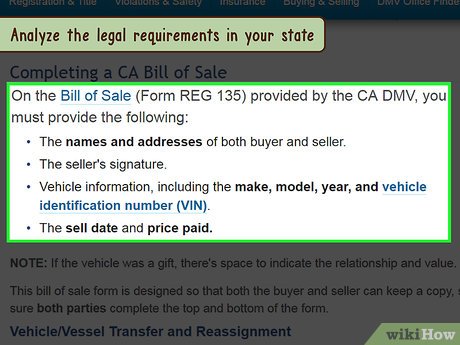
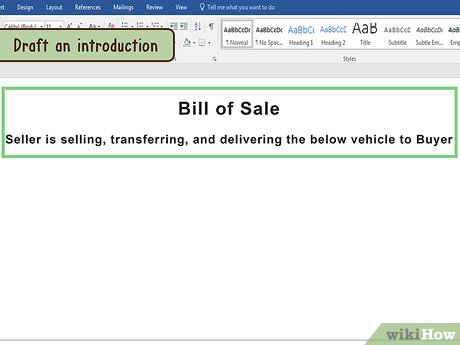
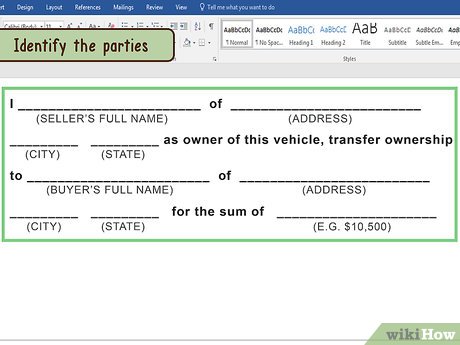
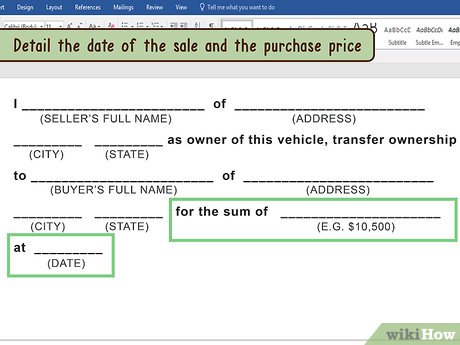
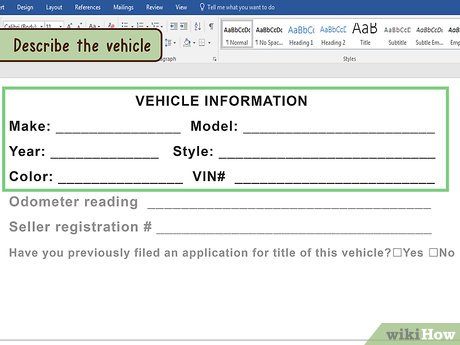
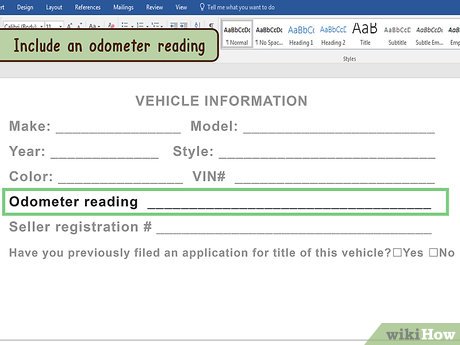
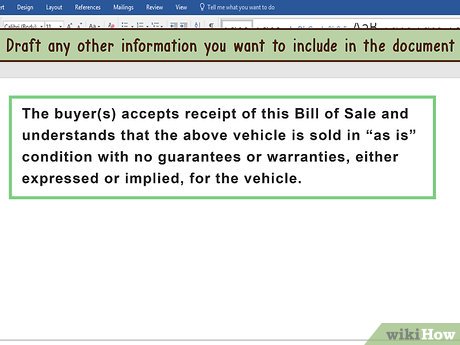

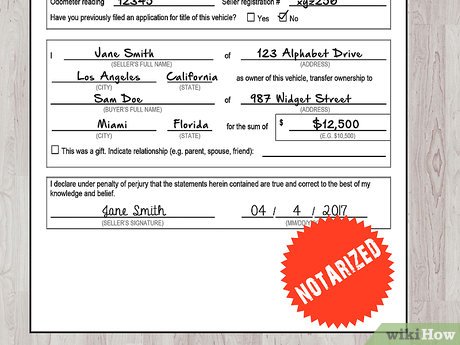
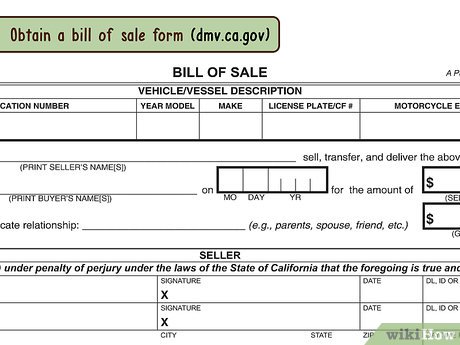
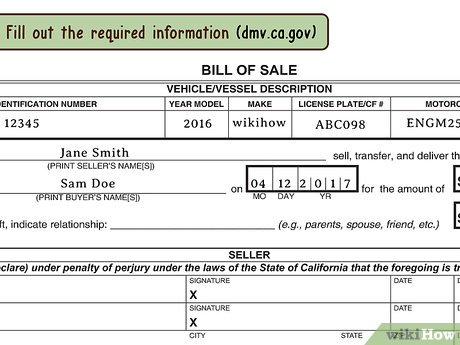
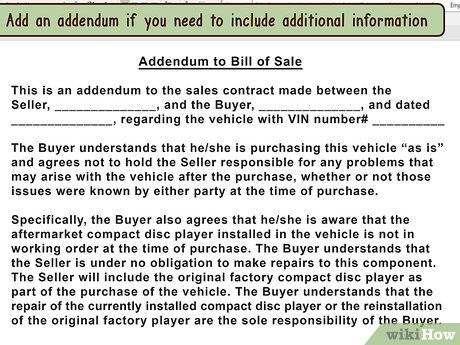
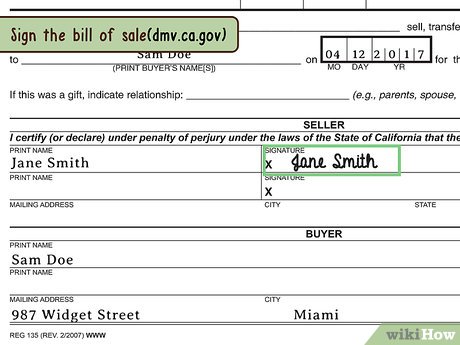
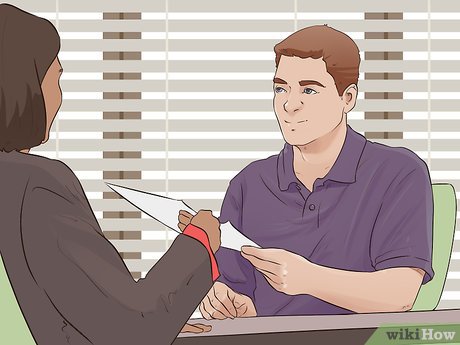
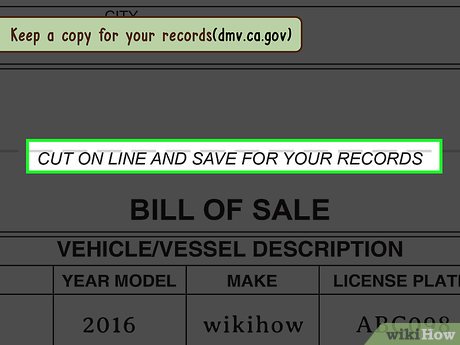






 How to Write a Bill of Sale for an RV
How to Write a Bill of Sale for an RV![Photo of [Infographic] Bill Gates started hacking and founding Microsoft, how did he become the richest person in the world?](https://tipsmake.com/data/thumbs_80x80/[infographic]-bill-gates-started-hacking-and-founding-microsoft-how-did-he-become-the-richest-person-in-the-world_thumbs_80x80_q3n7LZFQ3.jpg) [Infographic] Bill Gates started hacking and founding Microsoft, how did he become the richest person in the world?
[Infographic] Bill Gates started hacking and founding Microsoft, how did he become the richest person in the world? How did Bill Gates start up?
How did Bill Gates start up? 17 interesting facts that few people know about billionaire Bill Gates
17 interesting facts that few people know about billionaire Bill Gates Bill Gates' successes and 'failures'
Bill Gates' successes and 'failures' Learn from Bill Gates
Learn from Bill Gates